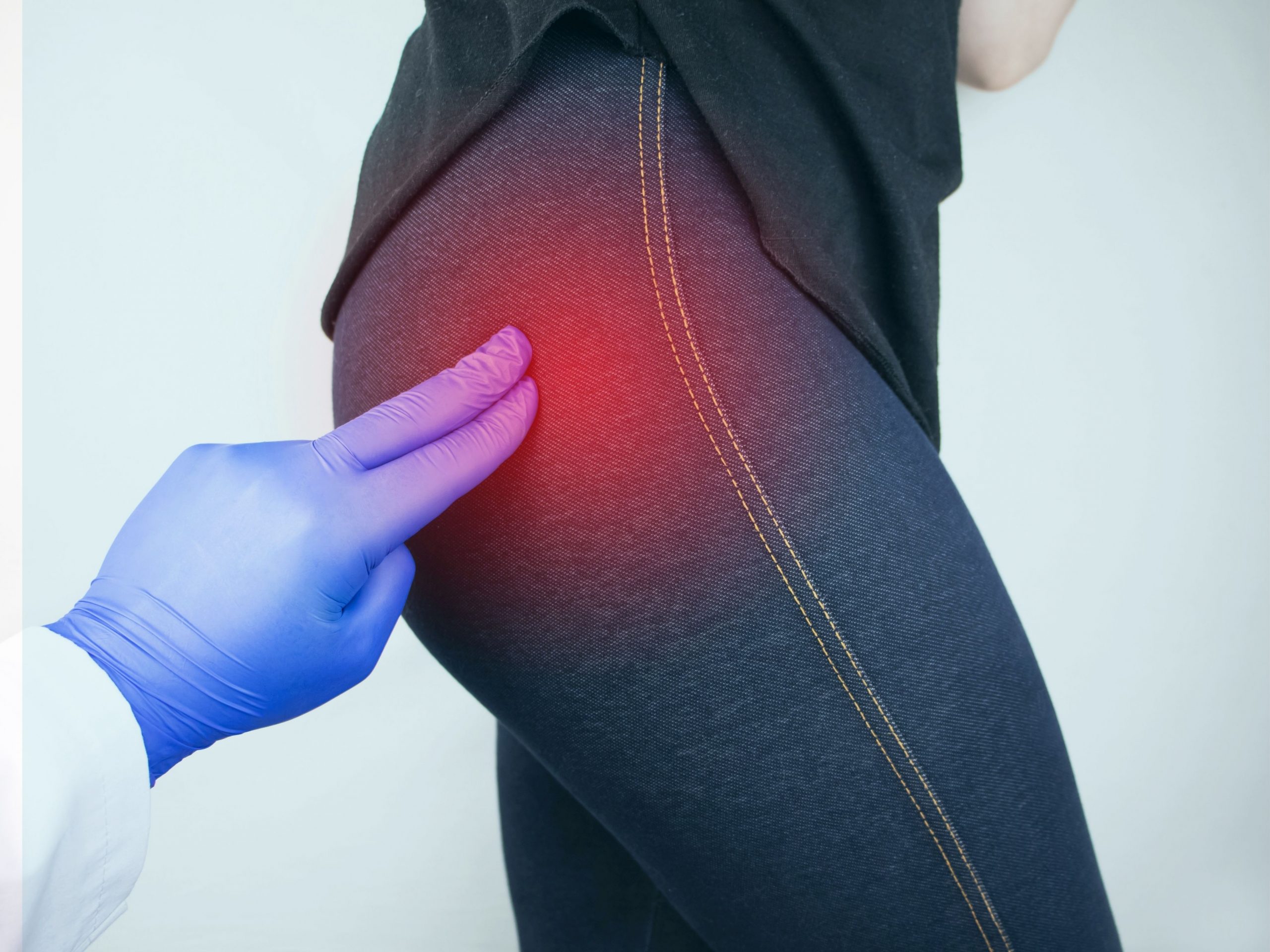Is buttock pain caused by Sciatica or Piriformis Syndrome?
Buttock pain can be very debilitating. Often it relates to either Sciatica or Piriformis Syndrome. While both relate to the sciatic nerve there are key differences between them.
Sciatica is a catchall term that refers to symptoms of pain, tingling, numbness, and/or weakness that radiates along the path of the sciatic nerve. This path runs from your lower back through your hips and buttocks and down the back of your leg. It typically affects only one side.

Buttock Pain
What does sciatica refer to?
Sciatica is a description of symptoms, and not a diagnosis, and can be due to one or more of several causes. Of these causes, a herniated disk in your spine or an overgrowth of bone in your vertebrae are the commonest causes. Other rarer causes include compression by a tumour or damage to the nerve from diseases such as diabetes.
What is Piriformis Syndrome?
Piriformis Syndrome, on the other hand, is much more specific. It refers to the piriformis muscle impinging on the sciatic nerve and causing symptoms of sciatica.
The piriformis is found in the buttocks near the top of the hip joint, and is important in lower body movement because it stabilizes the hip joint and lifts and rotates the thigh away from the body.
It helps us to walk and shift our weight from one foot to the other and maintain balance. It is also used in almost every motion of the hips and legs from getting up from a chair and walking to sports.
How to diagnose and treat buttock pain
A diagnosis of piriformis syndrome is made from the symptoms and a physical exam using a variety of movements to elicit pain to the piriformis muscle. During a physical examination, it is often possible to discover a contracted of tender piriformis muscle. Sometimes it is useful to rule out other possible causes of the pain. Therefore a doctor will often carry out tests such as an MRI scan or a blood test.
Knowing how to treat sciatica depends largely on the cause of the problem.
Some treatments are:
1. Adopting lifestyle changes that help you to avoid certain activities can be effective in helping to relieve symptoms. This could include, for example, changing the way you sit.
2. Other measures such as rest, ice, and heat may also help relieve symptoms.
3.A program of exercises and stretches can help reduce sciatic nerve compression. Also, Osteopathic manipulative treatment has been used to help relieve pain and increase range of motion.
4.Acupuncture and massage therapy have been shown to provide benefits including increased blood circulation, muscle relaxation, and release of endorphins (the body’s natural pain relievers).
5.Pain killers, anti-inflammatory medications, muscle relaxants, or injections with a corticosteroid or anesthetic may also prove useful.
We hope this information was useful for you. At Perea Clinic we offer massage and other forms of therapies that are effective in managing sciatica and piriformis syndrome. If you have either please contact us to see how we can help you. If you have any questions about it or about our treatments, please contact us. We are in Mill Hill Broadway and Islington. We are always happy to help.



